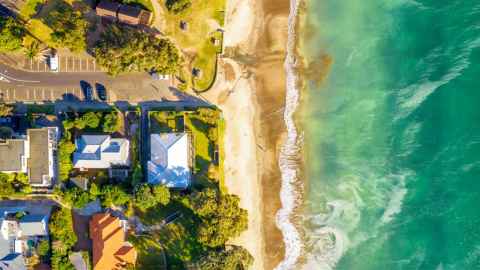NZ home-buyers’ natural hazard blind spot
11 May 2022
Opinion: William Cheung asks why New Zealanders seem to be neglecting natural hazards when buying a house.

Flooding events have impacted thousands of homes across Aotearoa New Zealand. However, such events have not resulted in lasting property price decreases - even in many flood-prone neighbourhoods.
Are people really neglecting the risk of natural hazards when looking to achieve their Kiwi dream?
Research I recently carried out with my colleague Associate Professor Edward Yiu, titled Public perception of flood hazards in the housing market: a revealed preference study of affect heuristics and availability heuristics, suggests that people will only typically pay less for a property if a flooding event has occurred recently.
Based on property transactions in the Auckland region, the study demonstrated that after some severe flooding events, property prices in those flood-prone areas had a short-lived decrease in the first six months after controlling for coastal amenities; however, such a discount fades over time.
Our research also revealed that most home buyers care more about coastal amenities than some intangible risk of flooding in the distant future, particularly when the information on flood risks is not clearly available.
It’s apparent that coastal amenities such as a stunning water view from a flood-prone property can generate a feeling of affection or the so-called “affect heuristic” that leads a potential homebuyer to overvalue a house price. Having said that, people are not entirely ignoring climate change-related risks such as sea level rise, and increasingly frequent and catastrophic flooding events should continue to raise people’s concerns.
What can we learn from these patterns of public perception of flood risks?
Because public perception of flood risks can vary substantially in different locations and at different times, such as from a recent flood event and/or the co-existence of coastal amenities, then a more transparent disclosure of flood risk information to prospective buyers at the early stage of a property transaction is crucial.
Although homebuyers receive a Land Information Memorandum (LIM) report that contains flood zone information regarding the property, it is still far from sufficient. The critical issue here is how to ensure homebuyers are aware of the potential impact of flooding risks in their home purchases.
Provided the problem is associated with the cognitive bias of people in perceiving the distant future risk of flooding, then a 'nudge' towards having flood risk labelling in the property sales information might help.
Indeed, sellers have a duty to disclose any previous flood events that have affected the property if they know of any. However, the disclosure is made only at the request of home buyers.
If the extent of flood risks could be presented in a format like a 'flood rating', which was required to be displayed in the sales materials, this would become a piece of readily available information to prospective homebuyers.
The idea is not something new, and as with the star rating for many food products in the supermarket, how at-risk a property is to flooding is also something that should be available in a clear and easily digestible format.
Dr William K. S. Cheung is a lecturer at the University of Auckland Business School.
This article reflects the opinion of the author and not necessarily the views of the University of Auckland.
Used with permission from Newsroom NZ home-buyers’ natural hazard blind spot 11 May 2022
Media queries
Sophie Boladeras | Media adviser
M: 022 4600 388
E: sophie.boladeras@auckland.ac.nz